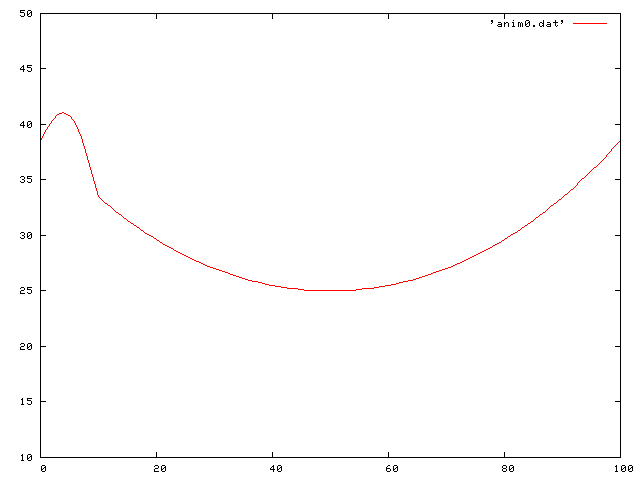Waves on a String, Waves on a Caternary
This assignment was to investigate waves of the following formula:
![]()
where:
![]()
For all of the below cases, this is the
code
that I used. I wrote it to be very general. A switch
statement is
used to change which initial condition is used. I also have all
of the
different forms of the differential equation to be solved in it.
All
that needs to be done is uncomment one and comment the others to go
between the different cases.
Also in my code, is a set of commands that create the batch file
used by gnuplot to make the animations. This set of commands in
gnuplot by itself does not actually make the animation, only the frames
for it. To make the animation from these pictures, all that is
required is to issue the linux command :
convert *.png animation.gif
in the directory containing the pictures. Note that the png files
must
be in numerical order, or else the animation will not be in the correct
order.
I first started with the simple case of a wave on a string with no friction or gravity. I did this for a couple of different cases.
First I used a single pluck:
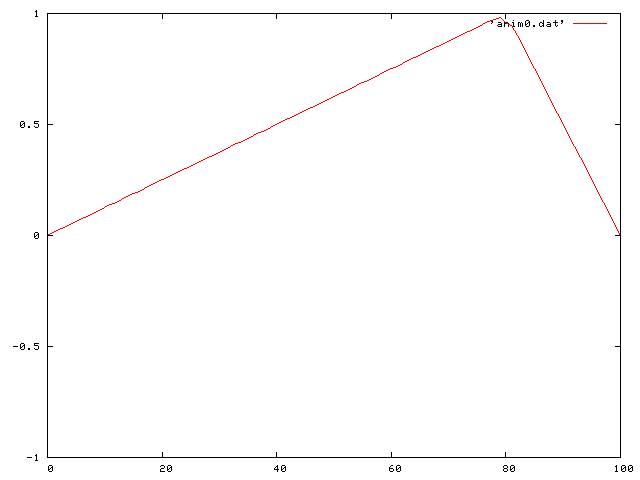
Then a double pluck:
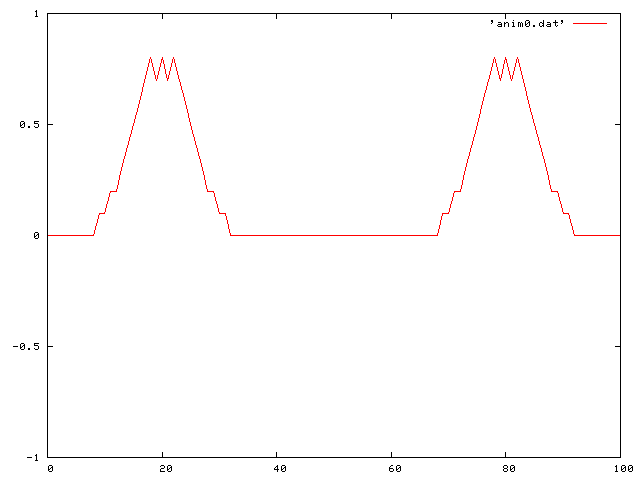
Then a standing sine wave:
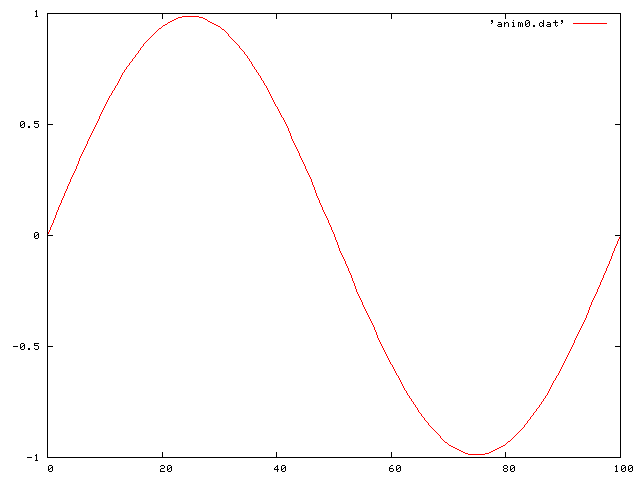
Then a half sine wave:
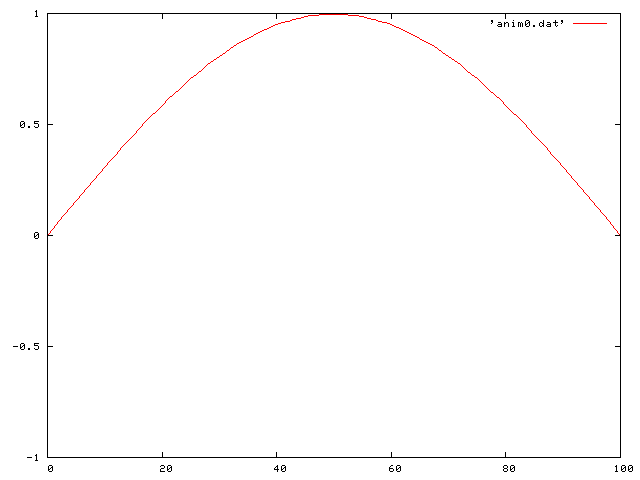
I next looked at the case where friction is added. The differential equation than becomes:
![]()
where κ is the coefficient of friction. Here I only looked at the case of the single pluck.
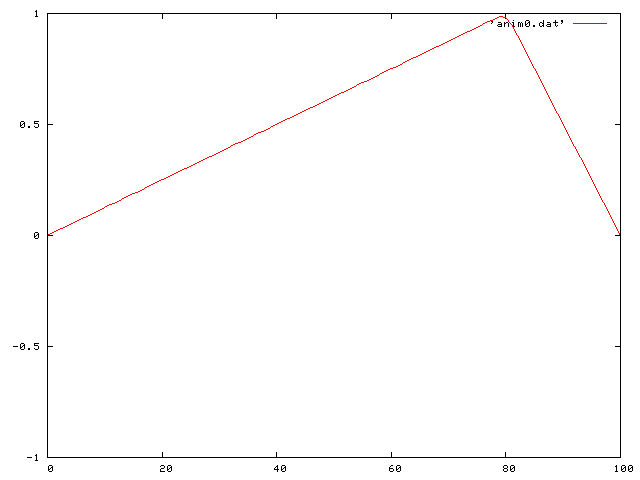
Note how the wave is decreasing in time. I also looked at the case of the single pluck, but where the coefficient of friction is negative. In this case the wave increases in size. This case is unphysical and violates our condition of small oscillations.
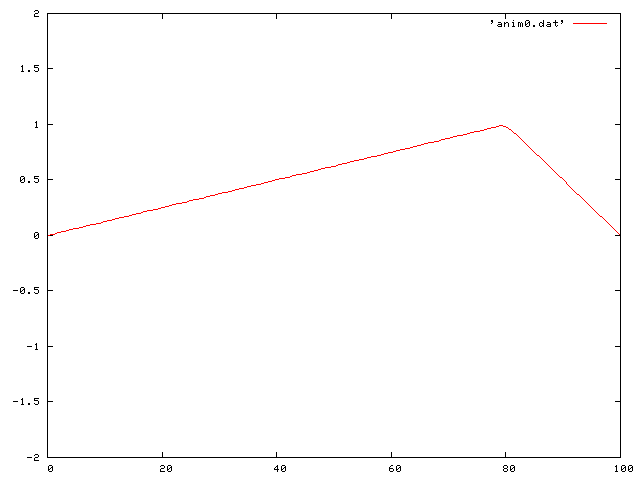
Now I look at the really interesting cases. That is, including gravity. I first looked at the case of no friction. The differential equation then becomes:
![]()
where:
![]() and
and ![]()
Here is the case of the initial configuration being that of a cosh function offset from the relaxed position:
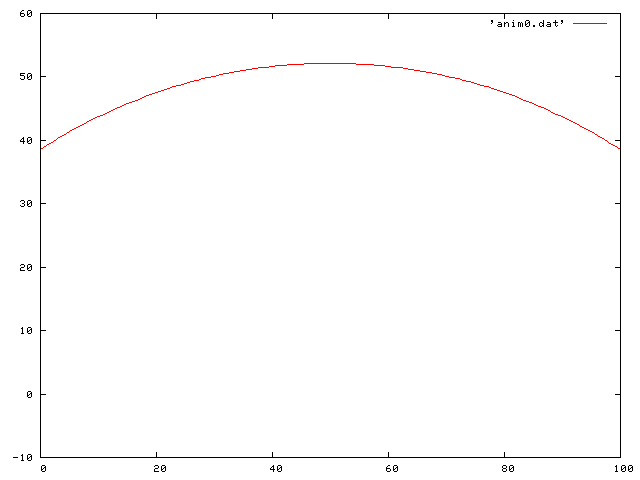
Here is a traveling sine wave along the string:
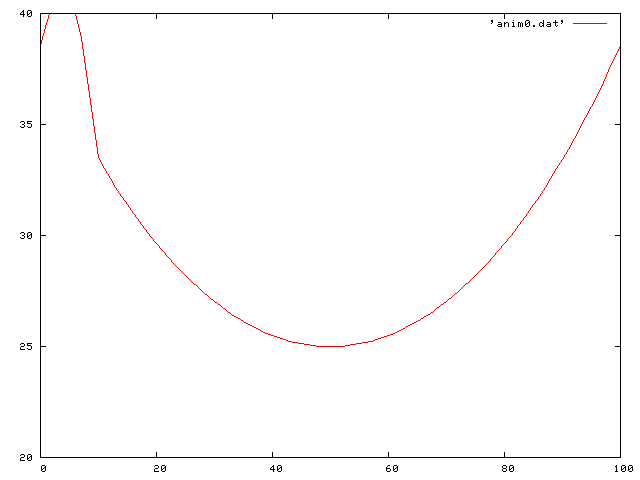
Now I put it all together and look at the case of gravity and friction. The differential equation then becomes:
![]()
Here we see a traveling decreasing sine wave along the string:
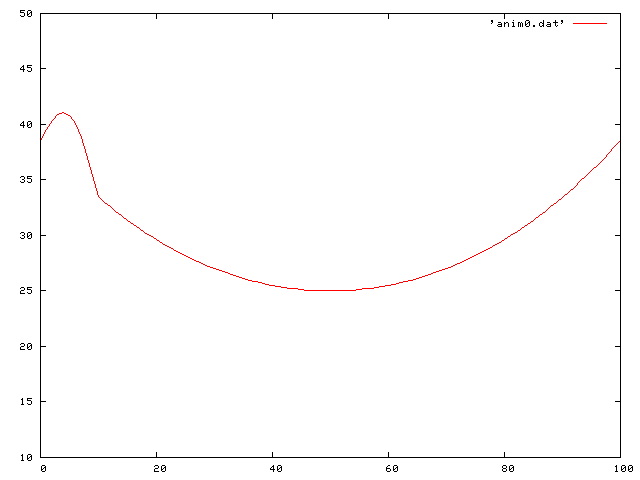
Here is the same traveling sine wave, but with a negative coefficient of friction so that it increases in time:
